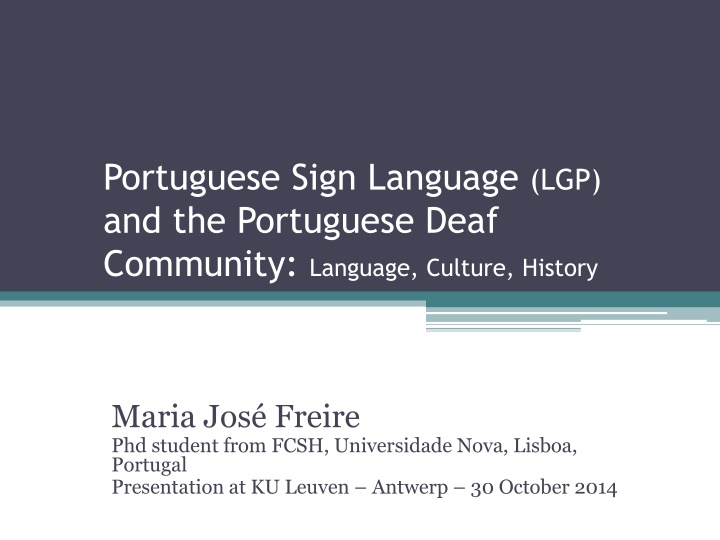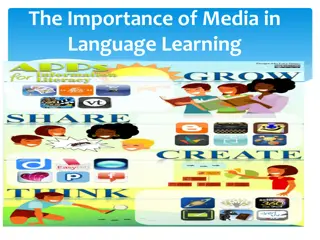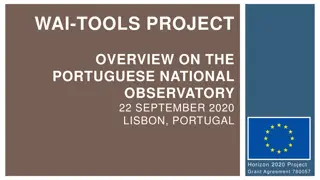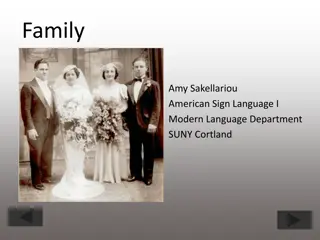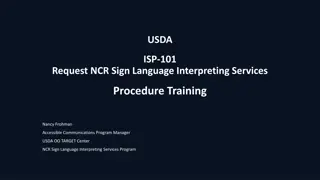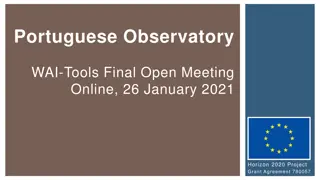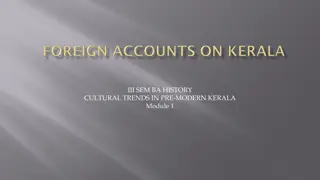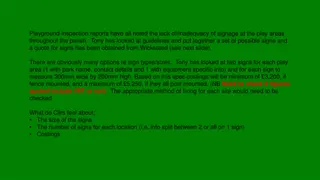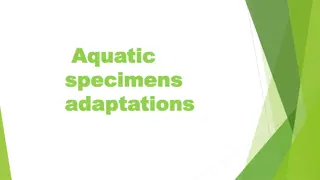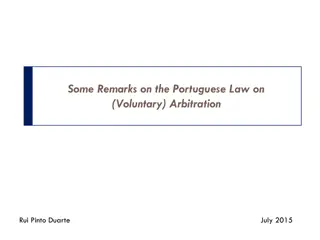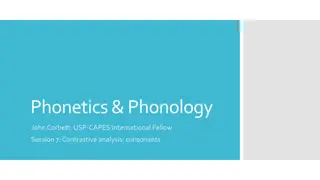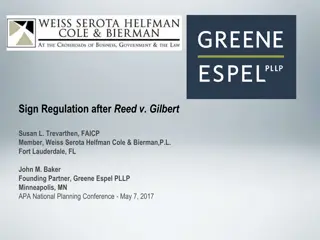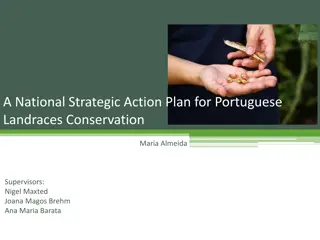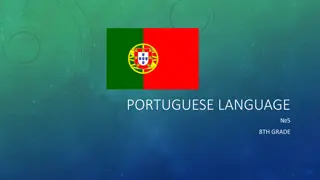Portuguese Sign Language: History, Achievements, Cultural Significance
Portuguese Sign Language (LGP) holds a rich history within the Portuguese Deaf Community, marked by an official recognition in 1995 and subsequent legal protection. The LGP has evolved over centuries to meet the community's needs, even evident in historical narratives. Further advancements include bilingual education and increased accessibility in media. Explore the profound cultural and linguistic value of LGP through this insightful journey.
Download Presentation

Please find below an Image/Link to download the presentation.
The content on the website is provided AS IS for your information and personal use only. It may not be sold, licensed, or shared on other websites without obtaining consent from the author.If you encounter any issues during the download, it is possible that the publisher has removed the file from their server.
You are allowed to download the files provided on this website for personal or commercial use, subject to the condition that they are used lawfully. All files are the property of their respective owners.
The content on the website is provided AS IS for your information and personal use only. It may not be sold, licensed, or shared on other websites without obtaining consent from the author.
E N D
Presentation Transcript
Portuguese Sign Language (LGP) and the Portuguese Deaf Community: Language, Culture, History Maria Jos Freire Phd student from FCSH, Universidade Nova, Lisboa, Portugal Presentation at KU Leuven Antwerp 30 October 2014
Official recognition of LGP - L ngua Gestual Portuguesa Portuguese Deaf Community founded a commission to fight for the official recognition of LGP in November 15th, 1995. This is now celebrated every year as the National Day of LGP. Deaf associations, parents, interpreters, teachers, families and friends were represented there. They held meetings with government, ministeries, political parties, parliament representatives, and managed to include LGP recognition within the Constitution which was beeing revised.
Deaf community attended during debates at the Parliament for the revision of Portuguese Constitution with volunteer sign language intepreters all the time. Finaly it was approved in July 1997, and published in Di rio da Rep blica in september,22nd, Law 1/97: To protect and to value portuguese sign language as cultural expression and a tool to access education and equal opportunities
Other achievements followed Despacho 7528/98 L3/2008 established bilingual education for deaf children Subtitles in portuguese television programmes Sign language interpretation of several news information programmes and entertainment Academic training for teachers of LGP and SLInterpreters
LGP history LGP, as other sign languages all over the world, is not a recent language. It has been developing and growing according to the needs of the Deaf community. Deaf people have been using it for centuries, although sometimes it is hard to find proof.
One proof of LGP in XVth century This book tells the story of the presecution of jews in Lisbon by the end of the 15th and begining of the 16th century. While reading this book, which accounts for a true narrative, I was surprised to find that there was a deaf person (Farid) in this narrative and that the narrator and him were friends from birth. Since their childhood they used a sign language to communicate. Throughout the book we can find lots of references to their communication using signs.
First school for the Deaf in Portugal In 1823 the first school for the Deaf (and also for the blind) was founded by our king D. Jo o VI because his daughter D. Isabel Maria was concerned about these children. P r Aron Borg, a swedish teacher was invited to organize and direct this school. He introduced a manual alphabet and used teaching methodologies that included signs. That is why our manual alphabet today and some signs are similar to the swedish ones.
Training of SLInterpreters and teachers of LGP Late 1980 s and early 1990 s Professional training of interpreters and SL teachers 1997/1998 SL interpreter training Academic training (5 year programme for interpreters) After Bologna only 3 year 2004/2005 SL teacher training Academic training (3 year programme)
Language and linguistics First linguistic study about Portuguese Sign Language, by Isabel Prata in 1980: M os que falam includes a brief description of linguistic aspects of LGP and photos of about 70 signs from the LGP. First LGP dictionary was published in 1991: Gestu rio da LGP containing 500 signs A new study about LGP grammar was published in 1994, by a linguist and two teachers of the deaf: Para Uma Gram tica da L ngua Gestual Portuguesa .
Sign language grammar This study establishes the first findings about portuguese sign language linguistic principles. As the authors do mention it is incomplete and needs more investigation and reflexion. Several papers have been published since, studying different grammatical aspects and linguistic features of LGP.
Hand Configurations from Para uma Gram tica da LGP (1994)
Localization signs attached to the body From Para uma Gram tica da L ngua Gestual Portuguesa (1994)
Other phonological components Orientation (Soares & Bettencourt) Neutral (palm towards body) (Ex: PEACH) Pronated (palm down/back) (Ex: FORM) Supinated (palm up/front) (Ex: CULTURE) Inverted (palm to the side/out) (Ex: PUT.AWAY.TO.THE.SIDE) Movement Non manual aspects/expressions
New signs My Phd investigation Political, social and economic changes give ground to new needs of communication. Also in the Portuguese Deaf community 1974, April 25th Major political change in Portugal begining of democracy 1981 International Year of People with Disabilities 1985 Portugal joined the EEC, now EU European Union
Contexts of lexical productivity Political new concepts expanded from old ones REPUBLIC CONSTITUTION; PARLIAMENT; DEMOCRATIC.ELECTION . Social equal opportunities EQUAL.OPORTUNITIES; CITIZENSHIP; HUMAN.RIGHTS Education further studies BILINGUALISM; UNIVERSITY; INVESTIGATION New technologies COMPUTER; MOBILE.PHONE; FACEBOOK .
Research methology Corpus LGP videos: Deaf associations; Deaf news; individuals Data collection Visualization; notation; register (files) Analysis Validation of new signs (group of native speakers) Lexicology and lexicography - productive processes Neology criteria Final results Validated files
Thank you Two DVD: Gestu rio Digital Dictionairy of LGP (L ngua Gestual Portuguesa) 1997- 2007: 10 Years of LGP recognition - Deaf community views (english subtitles) maria_josea@yahoo.com
